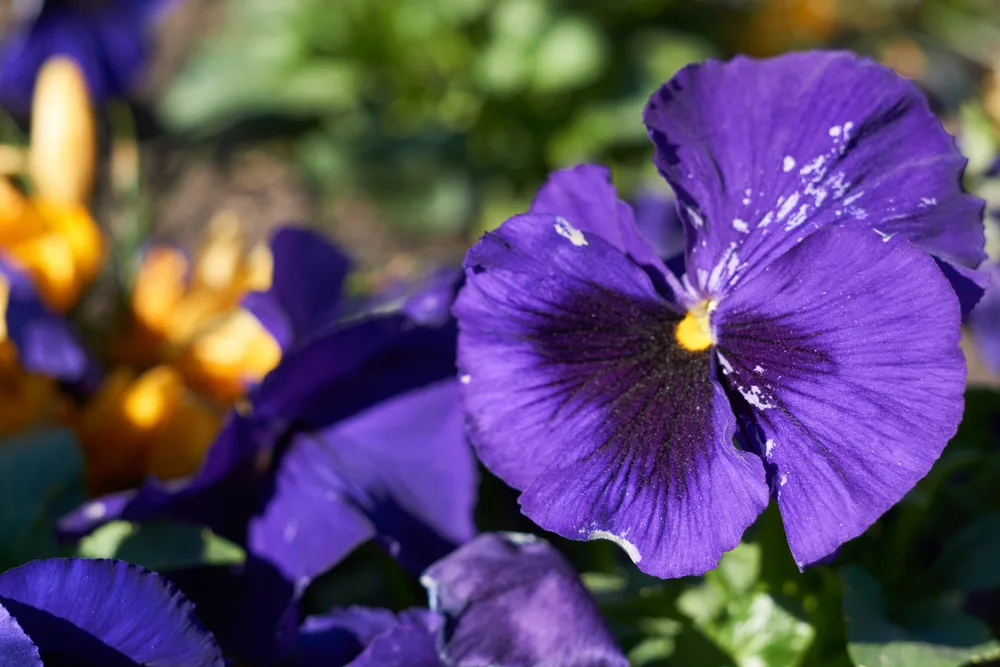Grow pansies either as annuals or perennials to add vibrant colors during the cool weather of spring and fall.

Pansies excel in cool seasons, offering bright colors in the spring and autumn, times when few other flowers bloom.
However, if you’re asking whether pansies are perennials that can withstand harsh winters, they are actually short-lived perennials by nature.
They are capable of overwintering in regions as chilly as Hardiness Zone 4, and covering them with snow or mulch might boost their survival in extreme cold.
Yet, in many parts of the U.S., pansies are typically grown as annuals or as biennials in regions with mild winters and cool summers.
Pansies (Viola x Wittrockiana) do not consistently return each year unless they self-seed. Since most pansies sold are hybrid varieties, the new plants from self-seeding might not resemble their parent plants.
Types of Pansies
Pansy flowers are often categorized into solid hues, stripes, and patterns with faces or blotches. Breeders have created varieties with large, small, and even frilly petals.
Pansies may feature single, semi-double, or double blossoms, available in colors like blue, yellow, orange, purple, burgundy, white, peach, and pink.
While pansies and violas are related and sometimes confused, violas generally bear smaller flowers.
For those seeking perennial plants with pansy-like flowers, consider perennial native violas such as Labrador violet (Viola labradorica), common blue violet or wood violet (V. sororia), and birdsfoot violet (V. pedata).
When to Plant Pansies
Often, we purchase pansies in four-packs or six-packs from nurseries, where choices are somewhat limited.
In many areas of the U.S., you can plant pansies in the fall for color through the autumn and into the early winter in warmer regions.
Pansies are commonly planted in the spring as soon as the soil is ready. They can tolerate light frost, but should be planted when the threat of severe frost has passed.
Select a sunny or partially shaded spot with well-draining soil. Enrich the area with compost, loosen the soil, then plant the pansies at the same depth they were in their containers.
Firm the soil around them, water thoroughly, and apply a layer of mulch to suppress weeds and retain moisture.
Growing Pansies from Seeds
Pansies are relatively straightforward to grow from seeds. Starting pansies by seed lets you explore a wider range of colors and flower forms not typically found in nurseries.
Keep in mind that pansy seeds can be slow to sprout, so start early and be patient.
- Prepare a tray with a moistened, high-quality seed-starting mix.
- Plant the pansy seeds indoors around 10-12 weeks before the expected last frost date for your region. Gently press the seeds into the mix.
- Cover the tray with newspaper or place it inside a black bag, as pansy seeds need darkness to germinate. Periodically check to ensure the mix stays moist.
- Once seedlings emerge in about two to three weeks, remove the cover and place them under bright, direct light.
- Provide extra light, like a grow lamp, to prevent the seedlings from becoming spindly, as natural light from a window may not be sufficient.
When the seedlings are strong and the weather has warmed, they are ready to be moved to the garden.
